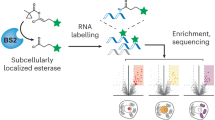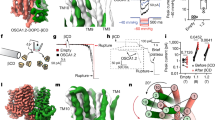Abstract
Cardiolipin is a mitochondrial phospholipid with a characteristic acyl chain composition that depends on the function of tafazzin, a phospholipid-lysophospholipid transacylase, although the enzyme itself lacks acyl specificity. We incubated isolated tafazzin with various mixtures of phospholipids and lysophospholipids, characterized the lipid phase by 31P-NMR and measured newly formed molecular species by MS. Substantial transacylation was observed only in nonbilayer lipid aggregates, and the substrate specificity was highly sensitive to the lipid phase. In particular, tetralinoleoyl-cardiolipin, a prototype molecular species, formed only under conditions that favor the inverted hexagonal phase. In isolated mitochondria, <1% of lipids participated in transacylations, suggesting that the action of tafazzin was limited to privileged lipid domains. We propose that tafazzin reacts with non–bilayer-type lipid domains that occur in curved or hemifused membrane zones and that acyl specificity is driven by the packing properties of these domains.
This is a preview of subscription content, access via your institution
Access options
Subscribe to this journal
Receive 12 print issues and online access
$259.00 per year
only $21.58 per issue
Buy this article
- Purchase on Springer Link
- Instant access to full article PDF
Prices may be subject to local taxes which are calculated during checkout






Similar content being viewed by others
References
Ma, L., Vaz, F.M., Gu, Z., Wanders, R.J.A. & Greenberg, M.L. The human TAZ gene complements mitochondrial dysfunction in the yeast taz1Δ mutant. Implications for Barth syndrome. J. Biol. Chem. 279, 44394–44399 (2004).
Testet, E. et al. Ypr140wp, 'the yeast tafazzin', displays a mitochondrial lysophosphatidylcholine (lyso-PC) acyltransferase activity related to triacylglycerol and mitochondrial lipid synthesis. Biochem. J. 387, 617–626 (2005).
Claypool, S.M., McCaffery, J.M. & Koehler, C.M. Mitochondrial mislocalization and altered assembly of a cluster of Barth syndrome mutant tafazzins. J. Cell Biol. 174, 379–390 (2006).
Xu, Y. et al. Characterization of tafazzin splice variants from humans and fruit flies. J. Biol. Chem. 284, 29230–29239 (2009).
Xu, Y., Malhotra, A., Ren, M. & Schlame, M. The enzymatic function of tafazzin. J. Biol. Chem. 281, 39217–39224 (2006).
Bione, S. et al. A novel X-linked gene, G4.5. is responsible for Barth syndrome. Nat. Genet. 12, 385–389 (1996).
Vreken, P. et al. Defective remodeling of cardiolipin and phosphatidylglycerol in Barth syndrome. Biochem. Biophys. Res. Commun. 279, 378–382 (2000).
Gu, Z. et al. Aberrant cardiolipin metabolism in the yeast taz1 mutant: a model for Barth syndrome. Mol. Microbiol. 51, 149–158 (2004).
Xu, Y. et al. A Drosophila model of Barth syndrome. Proc. Natl. Acad. Sci. USA 103, 11584–11588 (2006).
Acehan, D., Xu, Y., Stokes, D.L. & Schlame, M. Comparison of lymphoblast mitochondria from normal subjects and patients with Barth syndrome using electron microscopic tomography. Lab. Invest. 87, 40–48 (2007).
Claypool, S.M., Boontheung, P., McCaffery, J.M., Loo, J.A. & Koehler, C.M. The cardiolipin transacylase, tafazzin, associates with two distinct respiratory components providing insight into Barth syndrome. Mol. Biol. Cell 19, 5143–5155 (2008).
Acehan, D. et al. Cardiac and skeletal muscle defects in a mouse model of human Barth syndrome. J. Biol. Chem. 286, 899–908 (2011).
Acehan, D. et al. Cardiolipin affects the supramolecular organization of ATP synthase in mitochondria. Biophys. J. 100, 2184–2192 (2011).
Malhotra, A., Xu, Y., Ren, M. & Schlame, M. Formation of molecular species of mitochondrial cardiolipin. 1. A novel transacylation mechanism to shuttle fatty acids between sn-1 and sn-2 positions of multiple phospholipid species. Biochim. Biophys. Acta 1791, 314–320 (2009).
Schlame, M. et al. Deficiency of tetralinoleoyl-cardiolipin in Barth syndrome. Ann. Neurol. 51, 634–637 (2002).
Vaz, F.M., Houtkooper, R.H., Valianpour, F., Barth, P.G. & Wanders, R.J.A. Only one splice variant of the human TAZ gene encodes a functional protein with a role in cardiolipin metabolism. J. Biol. Chem. 278, 43089–43094 (2003).
Beranek, A. et al. Identification of a cardiolipin-specific phospholipase encoded by the gene CLD1 (YGR110W) in yeast. J. Biol. Chem. 284, 11572–11578 (2009).
Schlame, M. Formation of molecular species of mitochondrial cardiolipin. 2. A mathematical model of pattern formation by phospholipid transacylation. Biochim. Biophys. Acta 1791, 321–325 (2009).
McLaughlin, A.C., Cullis, P.R., Berden, J.A. & Richards, R.E. 31P NMR of phospholipid membranes: effects of chemical shift anisotropy at high magnetic field strengths. J. Magn. Reson. 20, 146–165 (1975).
Rand, R.P. & Sengupta, S. Cardiolipin forms hexagonal structures with divalent cations. Biochim. Biophys. Acta 255, 484–492 (1972).
Sankaram, M.B., Powell, G.L. & Marsh, D. Effect of acyl chain composition on salt-induced lamellar to inverted hexagonal phase transitions in cardiolipin. Biochim. Biophys. Acta 980, 389–392 (1989).
De Kruijff, B. et al. Further aspects of the Ca2+-dependent polymorphism of bovine heart cardiolipin. Biochim. Biophys. Acta 693, 1–12 (1982).
Shulga, Y.V., Topham, M.K. & Epand, R.M. Study of arachidonoyl specificity in two enzymes of the PI cycle. J. Mol. Biol. 409, 101–112 (2011).
Israelachvili, J.N., Marcelja, S. & Horn, R.G. Physical principles of membrane organization. Q. Rev. Biophys. 13, 121–200 (1980).
Thurmond, R.L., Lindblom, G. & Brown, M.F. Curvature, order, and dynamics of lipid hexagonal phases studied by deuterium NMR spectroscopy. Biochemistry 32, 5394–5410 (1993).
Otten, D., Löbbecke, L. & Beyer, K. Stages of the bilayer-micelle transition in the system phosphatidylcholine-C12E8 as studied by deuterium- and phosphorous-NMR, light scattering, and calorimetry. Biophys. J. 68, 584–597 (1995).
Cullis, P.R. & de Kruijff, B. Lipid polymorphism and the functional roles of lipids in biological membranes. Biochim. Biophys. Acta 559, 399–420 (1979).
Cullis, P.R. et al. Structural properties of phospholipids in the rat liver inner mitochondrial membrane. Biochim. Biophys. Acta 600, 625–635 (1980).
De Kruijff, B., Nayar, R. & Cullis, P.R. 31P-NMR studies on phospholipid structure in membranes of intact, functionally-active rat liver mitochondria. Biochim. Biophys. Acta 684, 47–52 (1982).
Nicolay, K., van der Neut, R., Fok, J.J. & de Kruijff, B. Effect of adriamycin on lipid polymorphism in cardiolipin-containing model and mitochondrial membranes. Biochim. Biophys. Acta 819, 55–65 (1985).
Chernomordik, L.V. & Kozlov, M.M. Mechanics of membrane fusion. Nat. Struct. Mol. Biol. 15, 675–683 (2008).
Nishizawa, M. & Nishizawa, K. Curvature-driven lipid sorting: coarse-grained dynamics simulation of a membrane mimicking a hemifusion intermediate. J. Biophys. Chem. 1, 86–95 (2010).
Montessuit, S. et al. Membrane remodeling induced by the dynamin-related protein Drp1 stimulates Bax oligomerization. Cell 142, 889–901 (2010).
Davies, K.M. et al. Macromolecular organization of ATP synthase and complex I in whole mitochondria. Proc. Natl. Acad. Sci. USA 108, 14121–14126 (2011).
Lowry, O.H., Rosebrough, N.J., Farr, A.L. & Randall, R.J. Protein measurement with Folin phenol reagent. J. Biol. Chem. 193, 265–275 (1951).
Bligh, E.G. & Dyer, W.J. A rapid method of total lipid extraction and purification. Can. J. Biochem. Physiol. 37, 911–917 (1959).
Cook, A.M. & Daughton, C.G. Total phosphorus determination by spectrophotometry. Methods Enzymol. 72, 292–295 (1981).
Sun, G. et al. Matrix-assisted laser desorption/ionization time-of-flight mass spectrometric analysis of cellular glycerophospholipids enabled by multiplexed solvent dependent analyte-matrix interactions. Anal. Chem. 80, 7576–7585 (2008).
Schlame, M. et al. Comparison of cardiolipins from Drosophila strains with mutations in putative remodeling enzymes. Chem. Phys. Lipids 165, 512–519 (2012).
Acknowledgements
We are grateful to B. De Kruijff for stimulating discussions. This work was supported by the Barth Syndrome Foundation, by the National Institutes of Health (HL078788 to M.S., HL091154 to M.R., 1U54GM094598 to D.L.S.) and by the Canadian Natural Sciences and Engineering Research Council (9848 to R.M.E.).
Author information
Authors and Affiliations
Contributions
M.S. conceived and designed the study, performed experiments, analyzed data and wrote the paper. D.A., B.B., Y.X. and S.V. performed experiments, analyzed data and interpreted the results. M.R. and D.L.S. gave technical support and conceptual advice. R.M.E. designed and performed experiments, analyzed data and revised the manuscript.
Corresponding author
Ethics declarations
Competing interests
The authors declare no competing financial interests.
Supplementary information
Supplementary Text and Figures
Supplementary Results (PDF 2337 kb)
Rights and permissions
About this article
Cite this article
Schlame, M., Acehan, D., Berno, B. et al. The physical state of lipid substrates provides transacylation specificity for tafazzin. Nat Chem Biol 8, 862–869 (2012). https://doi.org/10.1038/nchembio.1064
Received:
Accepted:
Published:
Issue Date:
DOI: https://doi.org/10.1038/nchembio.1064
This article is cited by
-
Membrane-destabilizing ionizable phospholipids for organ-selective mRNA delivery and CRISPR–Cas gene editing
Nature Materials (2021)
-
Barth Syndrome: Connecting Cardiolipin to Cardiomyopathy
Lipids (2017)
-
Loss of protein association causes cardiolipin degradation in Barth syndrome
Nature Chemical Biology (2016)
-
Cardiolipin remodeling: a regulatory hub for modulating cardiolipin metabolism and function
Journal of Bioenergetics and Biomembranes (2016)
-
Mitochondrial NM23-H4/NDPK-D: a bifunctional nanoswitch for bioenergetics and lipid signaling
Naunyn-Schmiedeberg's Archives of Pharmacology (2015)



